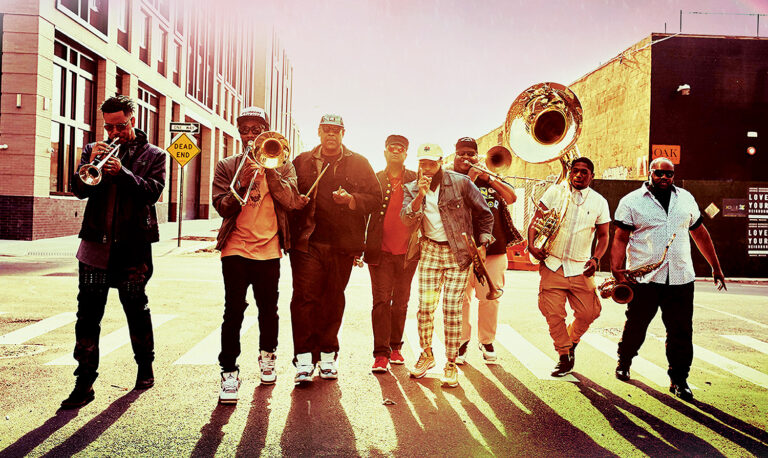A weekly guide to what’s happening.
ARTS AND MUSIC
WATCHHOUSE (FORMERLY MANDOLIN ORANGE) The name, like the duo’s new record, represents reinvention as a band at the regenerative edges of subtly experimental folk-rock. An inspired search for personal and political goodness, the new tunes offer lessons about what might become of humanity “when the night begins to break.” $42/$52.50. Proof of full vaccination or a negative Covid test within 72 hours. Wednesday, Feb. 16, 8pm. Rio Theatre, 1205 Soquel Ave., Santa Cruz. folkyeah.com.
NICKI BLUHM & THE BAND OF HEATHENS The show features songs from the Heathens, Bluhm’s catalog and collaborations, including a smoking cover of The Rolling Stones’ “Tumbling Dice.” The partnership began almost two years ago, just as the pandemic hit, when the Heathens started their weekly live stream show, “The Good Time Supper Club.” $25 plus fees. Proof of full vaccination or a negative Covid test required. Thursday, Feb. 17, 8pm. Felton Music Hall, 6275 Hwy 9. feltonmusichall.com.
LEFTOVER SALMON WITH KITCHEN DWELLERS The Colorado jam band that fuses bluegrass with everything has been at it for over three decades. To celebrate their 30-year career, the band released a biographical book, Leftover Salmon: Thirty Years of Festival!, and a vinyl box-set re-release of all of their studio albums. $30/$34 plus fees. Proof of full vaccination or a negative Covid test required. Friday, Feb. 18, 8pm. Felton Music Hall, 6275 Hwy 9. feltonmusichall.com.
TOM RIGNEY AND FLAMBEAU AND DIRTY CELLO Rooted in blues, bluegrass and Americana, these two bands are all about scorching entertainment. Tom Rigney and Flambeau’s eclectic and passionate music repertoire is filled with emotional intensity. Meanwhile, Dirty Cello is cello (played in ways you won’t believe) high-octane innovative musical talent. $26.25. Proof of full vaccination or a negative Covid test within 72 hours. Friday, Feb. 18, 8pm. Rio Theatre, 1205 Soquel Ave., Santa Cruz. riotheatre.com.
THE WEIR The arrival of a mysterious woman from Dublin disrupts the routine of a tiny pub in rural Ireland. The local barflies vie to impress her with tales of the supernatural but what starts as stories of ghosts and fairies leads to revelations about love and family. ‘The Weir’ scored playwright Conor McPherson the Laurence Olivier Award for ‘Best New Play.’ $45-50.Thursday, Feb. 17, 7:30pm. Friday, Feb. 18 and Saturday, Feb. 19, 8pm. Sunday, Feb. 20, 2pm. The Colligan Theater, 1010 River St., Santa Cruz. jeweltheatre.net.
TOMMY CHONG MEET AND GREET “Mostly Maui Waui man, but it’s got some Labrador in it.” Meet Tommy Chong, the multi-talent—one half of the beloved comedy duo Cheech & Chong—behind one of the greatest lines of any stoner film ever made. The star of classics, Up in Smoke and Nice Dreams, will meet and greet fans, sign autographs and pose for photos. Chong recently launched Tommy Chong’s Cannabis, available in flower and pre-rolls. Sorry, Labrador is not included. Friday, Feb. 18. Noon-2pm. KindPeoples, 533 Ocean St., Santa Cruz. 3-5pm. KindPeoples, 3600 Soquel Ave. kindpeoples.com.
REV. BILLY C. WIRTZ. One of Reverend Billy C. Wirtz’s most treasured childhood memories was watching the gospel programs broadcasted from the Bell Auditorium in Augusta, Georgia. In 1963, his family moved to Washington, D.C., where he eventually landed a job at Glen’s Music, a record store that catered to Black music, including R&B, jazz and spirituals. “I spent all day long listening to Julius Cheeks, Clarence Fountain and the Dixie Hummingbirds. I was in heaven,” Wirtz said. $25/$40. Saturday, Feb. 19, 7:30pm. Kuumbwa Jazz Center, 320 Cedar St., Santa Cruz. kuumbwajazz.org
ALEX LUCERO AND LIVE AGAIN AT EL VAQUERO WINERY Lucero grew up listening to soul music of the ’60s and ’70s. Artists like Al Green, Marvin Gaye, Van Morrison and Stevie Wonder have been huge musical influences on the singer-songwriter. Lucero and his band plan to continue touring across California, promoting their new album, Opportunity. Sunday, Feb. 20, 2-5pm. El Vaquero Winery, 2901 Freedom Blvd., Watsonville. elvaquerowinery.com.
DOWNTOWN SANTA CRUZ MAKERS MARKET Come on out for some fresh air and crafty goodness every third Sunday of the month! This market hosts a wide range of locally handmade goods. Find your favorite Santa Cruz makers and rising stars. The variety is noteworthy. Friendly leashed pups are welcome. Masks are recommended per the current health guidelines for outdoor public spaces. Sunday, Feb. 20, 10am-5pm. Downtown Santa Cruz, Pacific Ave., Santa Cruz. scmmakersmarket.com.
COMMUNITY
SANTA CRUZ WARRIORS VS. TEXAS LEGENDS Cheer on your Santa Cruz Warriors, the most advanced players in the world outside of the NBA, as they compete against the Texas Legends. $17/-$105. 7pm, Thursday, Feb. 17. Kaiser Permanente Arena, 140 Front St., Santa Cruz. santacruz.gleague.nba.com.
COMMUNITY PILATES MAT CLASS Build strength at the popular in-person community Pilates Mat Class. Bring a mat, a small Pilates ball and TheraBand (if you have one). Must be vaccinated. $10/Suggested donation. Thursday, Feb. 17, and Tuesday, Feb. 22, 10am. Temple Beth El, 3055 Porter Gulch Road, Aptos.
VIRTUAL DEATH CAFÉ Hosted by Hospice of Santa Cruz County, grab a mug of your favorite tea for a Zoom discussion on death to affirm what’s important about life. A “Death Café” is a group-directed discussion of death with no agenda, objectives or themes. It’s not a grief support group or counseling session, just some folks getting together to drink tea and talk about death. Tuesday, Feb. 22, 5-6pm. deathcafe.com.
GROUPS
ENTRE NOSOTRAS GRUPO DE APOYO Spanish-speaking women diagnosed with cancer meet twice monthly. Free. Registration required. Friday, Feb. 18, 6pm. WomenCARE, 2901 Park Ave., Ste. A1, Soquel. 831-457-2273. womencaresantacruz.org.
WOMENCARE ARM-IN-ARM WomenCARE Arm-in-Arm Cancer support group for women with advanced, recurrent or metastatic cancer meets every Monday on Zoom. Free. Registration required. Monday, Feb. 21, 12:30pm. 831-457-2273. womencaresantacruz.org.
WOMENCARE TUESDAY SUPPORT GROUP The WomenCARE Tuesday Cancer support group currently meets on Zoom for women newly diagnosed and those undergoing treatment. Free Registration required. Tuesday, Feb. 22, 12:30-2pm. 831-457-2273. womencaresantacruz.org.
THE COMPASSIONATE FRIENDS SIBLINGS GRIEF SUPPORT The mutual support group is open to individuals who have experienced the death of a brother or sister at any age, due to any cause, any length of time ago. Meetings are open to bereaved siblings aged 14 and up. Grief materials are available. TCF is non-religious. Bereaved siblings only. If you have lost a child or grandchild, please see our listing for support meetings on the second Monday of each month. Tuesday, Feb. 22, 7-8:30pm. tcfsantacruz.com
OUTDOOR
MINI FUNGUS FAIR For nearly 50 years, the Fungus Federation of Santa Cruz has welcomed thousands of visitors to the annual Fungus Fair to explore the fascinating world of mushrooms. The event returns to the Santa Cruz Museum of Natural History, launched in 1974. Join local fungiphiles to display dozens of species of local mushrooms outside the museum in Tyrrell Park, along with free family-friendly activities and community resources, including free admission to the museum all day. Fungi-centric food will be available from Areperia 831. Free. Saturday, Feb. 19, 10am-2pm. Santa Cruz Museum of Natural History, 1305 E. Cliff Drive, Santa Cruz. santacruzmuseum.org
SUNSET BEACH BOWLS & BONFIRE Watch the sunset and experience the multi-sensory vibrations of crystal bowls and the ocean waves, creating a blissful symphony of sound. Moran Lake Beach. Free. Tuesday, Feb. 22, 5-6pm. Moran Lake Park & Beach, E. Cliff Drive, Santa Cruz. 831-333-6736.



















